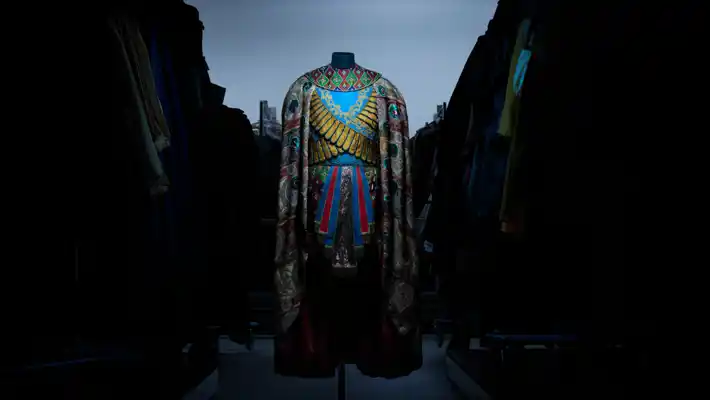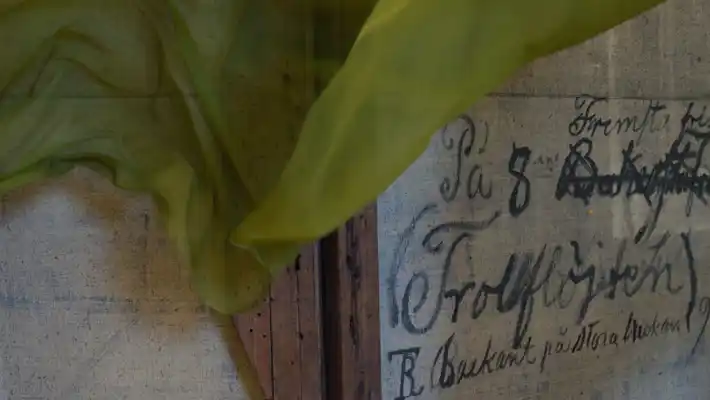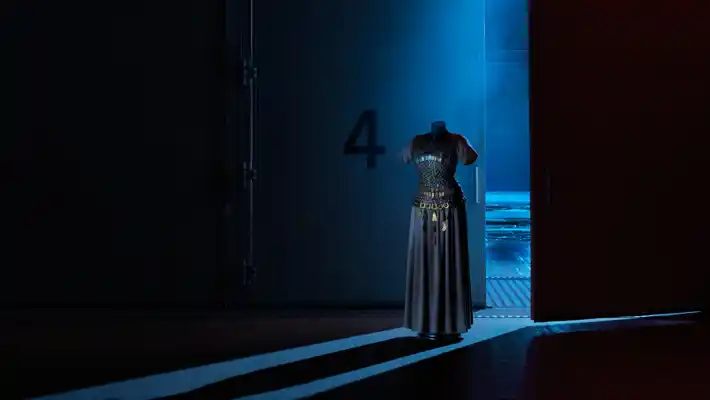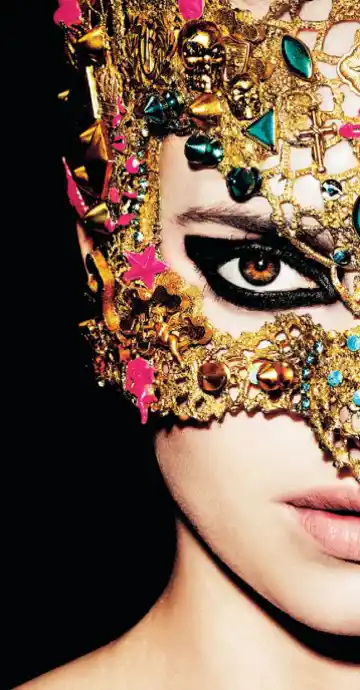As one of the oldest opera houses in Europe, we boast a well-preserved archive and collections that have been spared fire and other calamities
The history of the Royal Swedish Opera from 1773 to the present
As one of Europe's oldest opera houses, the Royal Swedish Opera has well-preserved archives and collections. They can tell endless stories about us and about our art forms throughout the ages. The opera's archive and collections - which is Sweden's largest single archive in the theater area - reflect our activities from the foundation in 1773 until today.The Royal Swedish Opera's mission includes preserving and caring for our cultural heritage. We make sure to safeguard and permanently preserve the theater's operations and memory for the future.
The Royal Opera's archives and collections
The Royal Swedish Opera has a unique collection of archival documents, photographs, costumes, scenography models, costume and decoration sketches and autograph pages of famous musical works. Since we have been spared from wars and fires, much has been preserved as far back as the days of Gustav III. Since the Opera had a joint organisation with the Royal Dramatic Theatre from its founding in 1788, the activities of the "Dramaten" are also included in the archives until 1907 when the Dramaten formed its own archives.
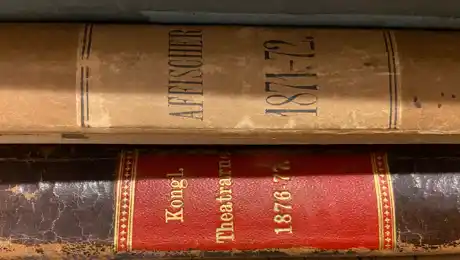
The repertoire archive
Curious about who danced Odette in Swan Lake on that particular evening in 2024? Or who sang Cavaradossi in Tosca in 1964? In the repertoire archive you will find all the answers!
To the repertoire archive (in Swedish)Royal Theatre Archives (KTA) and Royal Theatre Opera Archives (KTOA)
The Royal Theatre Archive (KTA) is the older archive of Opera and Drama. It stretches back to the year 1771 and goes up to the 1985/86 season. Due to various organisational changes over the years, an archive "split" took place in 1986/87 (KTOA).
The archives includes documents with provenance from the King. The theatres' administrative routines and artistic activities in opera, ballet, court music and spoken theater - on the main stage and in other theatres under joint administration. Documents from the artistic activities are, for example, costume lists, floor plans, lighting and props' journals. From the administrative activities there are f.ex. employment contracts, accounts, board minutes and theatre management correspondence. The archives of the Royal Theaters consist of around 2,500 volumes on approx. 400 meters of shelf space. The archives also includes Royal Theatre's play collection, which contains just over 2,400 titles. The newer part of the archive reflects, like the archive of the Royal Theatres, both the administrative and artistic activities at the theatre.
Archive index KTA (in Swedish) »
Plays and libretti 8in Swedish) »
The Royal Opera's photo archive
Our photo archive consists of photographic material from the end of the 19th century until today. Here you can find negatives, slides, hard copies and digital image files. The archive primarily contains production-related photographs such as cast portraits and photographs taken directly on stage, but also image material that reflects life behind the scenes. A large part of the photo archive consists of photographer Enar Merkel Rydberg's pictures. He was employed as a photographer at the theater between the years 1946 and 1995. His images are a fantastic source of information of our activities during this period. A period when several prominent artists such as Birgit Nilsson, Nicolai Gedda, Sixten Ehrling, Marianne Orlando, Anneli Alhanko and others were active.
The Royal Opera's musical collection
The Opera's musical collection, which includes material from 1773 to the present day, is partly in the Opera's own archive and partly deposited at the Music and Theater Library, Musikverket (in principle material before 1900). It is not only music-dramatic works, but also symphonies, divertimenti, interlude music and incidental music are in the collections.
Since the sheet music - score, orchestral parts, piano excerpts, vocal parts and libretti - have mainly been used by the Opera's various professional groups as working material in the Opera's productions, they form a unique documentation concerning, among other things, direction, lighting and song rehearsal.
The material is searchable in the Opera's internal database and in catalogs at the Music and Theater Library.
The Royal Swedish Opera's art collection
The Opera's art collection consists of permanent decoration in the form of sculptures, reliefs and wall and ceiling paintings, as well as portraits in various techniques and a large collection of decor and costume sketches.
Among the permanent decoration, paintings by Carl Larsson, Georg Pauli and Prince Eugen are especially noticeable. The portrait collection includes sculptures, works in oil, watercolour, gouache and graphics - everything from the Gustavian period and onwards. The Opera's set designs and costume sketches are templates that have been used as working material in our studios for the various productions. Among the the material, works by artists such as Isaac Grünewald, Sven X:et Erixson, Otte Sköld and others are particularly noticeable.
The art that hangs in the public spaces can be seen in connection with the performances. With the help of our printed art guide, you as a visitor get information about the various works of art. With the guide, you can walk around, follow the location of the artworks and read about each artwork and its connection to our house and the art of opera and ballet.
The Royal Swedish Opera's historical costume collection
In the Opera's possession is a larger collection of historical theater costumes from the 18th, 19th, 20th and 21st centuries. The collection consists of costumes that have been used in both opera, ballet and theatre performances. The costumes have incredible stories to tell - both about the repertoire and about the fantastic craftsmanship that has existed at the Opera throughout the ages and also about which artists have worn them.
The collection includes Gustavian costumes, magnificent skirt borders purchased from Paris, costumes from the 19th century folkloric Bournonville ballets, 20th century costumes created by artists and costume designers such as Thorolf Jansson, Sven X:et Erixon, Jan Brazda and David Walker. The costumes are often marked with the name of the piece as well as the actor/singer/dancer, and the collection includes costumes worn by people such as Lars Hjortsberg, Mathilda Jungstedt, Jussi Björling and Birgit Nilsson. Some costumes have been used for a long time and worn by many performers. The costume that Birgit Nilsson wore in Die Walküre in the 1950s, for example, was previously worn by Mathilda Jungstedt around the turn of the century in 1900. Other costumes have been re-sewn and reused in completely different sets. The collection also includes shoes, hats, helmets, jewelry and more. The collection shows an incredible level of professionalism, but also incredible ingenuity - something that has always prevailed in the Opera's costume department.
The Royal Swedish Opera's scenography model collection
The opera's collection of scenography models today consists of nearly 250 models from opera and ballet sets - from the 1940s until today. Scenographers such as Stellan Mörner, Kerstin Hedeby, Sven Erik Skawonius, Lars-Åke Thessman and Lennart Mörk are for example represented in the collection.
The collection begins at a time when decor went from being just a background or environment, to having an active part in the interpretation of a work.
How to search the archives
Do you remember your first opera or ballet visit and who was on stage? What did a poster look like in the late 19th century? In our repertoire archive, you can find information about that - and much more.
-
The Opera's repertoire archive
The Opera's repertoire archive is a goldmine for those who want to know more about our repertoire through the ages. In just a few seconds, can find out everything from how many times the Royal Swedish Opera has played Die Zauberflöte to how many times Birgit Nilsson sang Brünnhilde in Wagner's Der Ring des Nibelungen at the Opera.
Search our repertoire archive (in Swedish) -
The Royal Theatre archive (KTA) and The Royal Theatre Opera's archive (KTOA)
To find information about material in our archives, see the inventory lists for the Royal Theatres' archives (in Swedish):
Archive index KTA »
Plays and libretti »Contact the Opera's archives if you would like the complete list.
We are continuously working to digitize material in our archives and collections. More material will be available soon. It will then be possible to dive deep into lots of beautiful costumes and exciting documents.
-
Opening hours for archive visits
NB: the archive is closed for visits during the autumn of 2024 due to a change of premises.
The Royal Opera's archives are open to the public and you are most welcome to visit us. We are open by appointment and all visits must be booked in advance with the archivist. Contact us as early as possible before your visit. We then have the opportunity to prepare your visit in the best possible way and pick out the material you are interested in. We are happy to help and guide you, but you do the research yourself. -
Contact details
E-mail [email protected]
Visiting address
The Opera House, Stage entrance, Jakobs Torg 4, StockholmStaff
Music library director/archives/copyright Erik Hvitfeldt
Librarian/music scores Danijel Pogarčić
Librarian/music scores Mårten Ljungberg
Librarian/arrangements Staffan Lundberg
Archivist Helena Iggander

